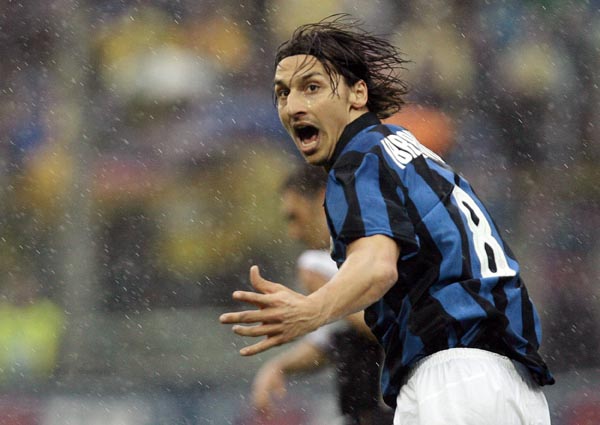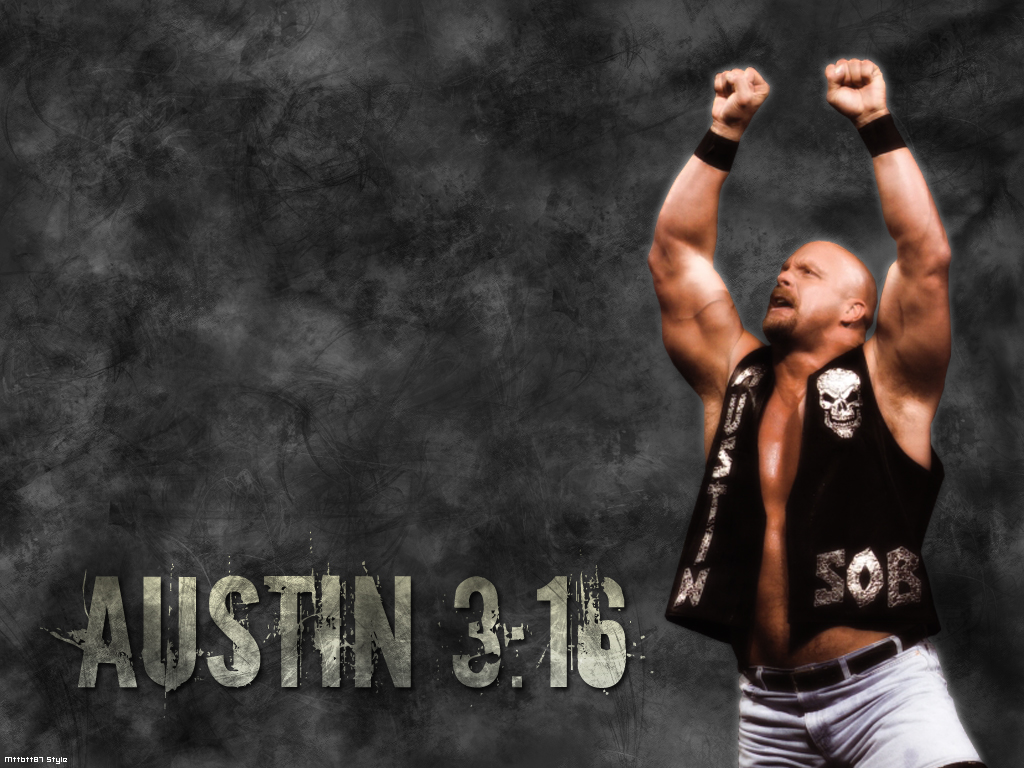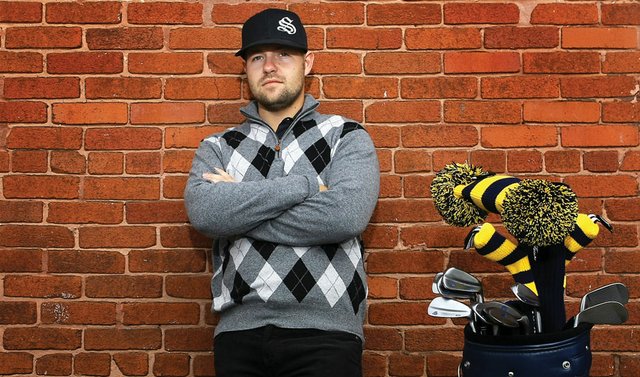Alberto del Rio Promo
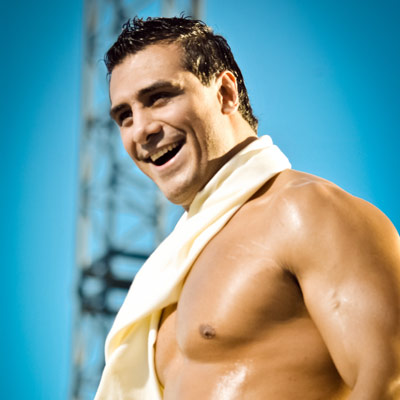 Alberto Rodríguez (born May 25, 1977) is a Mexican professional wrestler, currently signed to WWE, performing on its Raw brand under the ring name Alberto Del Rio. He is a former WWE Champion, the 2011 Royal Rumble winner, outlasting 39 other participants to win the largest Royal Rumble match ever, and 2011 Mr. Money in the Bank (Raw). Before working for WWE, Rodriguez used the name Dos Caras, Jr. as both a mixed martial artist and luchador in mostly Mexico and Japan. He worked in both of Mexico's main wrestling promotions and achieved success in Consejo Mundial de Lucha Libre (CMLL), where he is a former World Heavyweight Champion.
Alberto Rodríguez (born May 25, 1977) is a Mexican professional wrestler, currently signed to WWE, performing on its Raw brand under the ring name Alberto Del Rio. He is a former WWE Champion, the 2011 Royal Rumble winner, outlasting 39 other participants to win the largest Royal Rumble match ever, and 2011 Mr. Money in the Bank (Raw). Before working for WWE, Rodriguez used the name Dos Caras, Jr. as both a mixed martial artist and luchador in mostly Mexico and Japan. He worked in both of Mexico's main wrestling promotions and achieved success in Consejo Mundial de Lucha Libre (CMLL), where he is a former World Heavyweight Champion.
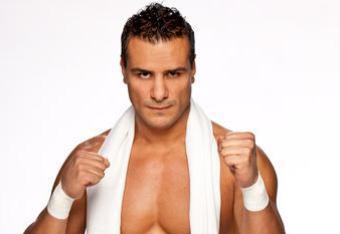 Born in San Luis Potosí as the son of luchador Dos Caras Rodríguez graduated from Universidad Autonoma de San Luis Potosí where he earned a degree in architecture.Growing up in a family of wrestlers Rodríguez decided to take up Greco-Roman wrestling, training under Leonel Kolesni and Juan Fernández. He earned a place on the Mexican national team in Greco-Roman wrestling and while competing on the national team obtained several accomplishments.In 1997, he placed third at the World Junior Championships, in the Czech Republic. He also won the Central American and Caribbean Games in his weight division three times and won a medal at the Pan American Games. Rodríguez was on track to compete at the 2000 Summer Olympics in Sydney, Australia, but due to a lack of funding and support, Mexico did not send a wrestling team that year.
Born in San Luis Potosí as the son of luchador Dos Caras Rodríguez graduated from Universidad Autonoma de San Luis Potosí where he earned a degree in architecture.Growing up in a family of wrestlers Rodríguez decided to take up Greco-Roman wrestling, training under Leonel Kolesni and Juan Fernández. He earned a place on the Mexican national team in Greco-Roman wrestling and while competing on the national team obtained several accomplishments.In 1997, he placed third at the World Junior Championships, in the Czech Republic. He also won the Central American and Caribbean Games in his weight division three times and won a medal at the Pan American Games. Rodríguez was on track to compete at the 2000 Summer Olympics in Sydney, Australia, but due to a lack of funding and support, Mexico did not send a wrestling team that year.
 After not competing at the 2000 Olympic games Rodriguez turned to the family business, and trained with his father to become a professional wrestler. Caras made his debut appearance on May 9, 2000 as he ran in during an Asistencia Asesoría y Administración (AAA) show to save his father from a beat down from El Texano, Pirata Morgan and Espectro, Jr. After making follow up TV show appearances Caras did not make his in ring debut until September 29 of that year when he teamed with Sangre Chicana, El Alebrije and La Parka, Jr. to defeat Los Consagrados (El Texano, Pirata Morgan, Espectro, Jr. and El Cobarde) at AAA's summer event Verano de Escándalo. After his debut Rodriguez would travel to Japan to compete as well, making his Japanese debut on October 11 by teaming with his father to defeat the team of El Azteca and Chiba. Caras continued his AAA storyline with Los Consagrados, teaming with Octagón, La Parka, Jr. and Hong Kong Lee to defeat Los Consagrados by disqualification. Over the next couple of years Caras would work both in Mexico and Japan to gain experience in the ring. In Mexico he worked exclusively for AAA making appearances at shows such as the 2002 Verano de Escándalo, where he teamed with Gronda and El Hijo del Solitario to defeat the trio of Pirata Morgan, Sangre Chicana and El Brazo.
After not competing at the 2000 Olympic games Rodriguez turned to the family business, and trained with his father to become a professional wrestler. Caras made his debut appearance on May 9, 2000 as he ran in during an Asistencia Asesoría y Administración (AAA) show to save his father from a beat down from El Texano, Pirata Morgan and Espectro, Jr. After making follow up TV show appearances Caras did not make his in ring debut until September 29 of that year when he teamed with Sangre Chicana, El Alebrije and La Parka, Jr. to defeat Los Consagrados (El Texano, Pirata Morgan, Espectro, Jr. and El Cobarde) at AAA's summer event Verano de Escándalo. After his debut Rodriguez would travel to Japan to compete as well, making his Japanese debut on October 11 by teaming with his father to defeat the team of El Azteca and Chiba. Caras continued his AAA storyline with Los Consagrados, teaming with Octagón, La Parka, Jr. and Hong Kong Lee to defeat Los Consagrados by disqualification. Over the next couple of years Caras would work both in Mexico and Japan to gain experience in the ring. In Mexico he worked exclusively for AAA making appearances at shows such as the 2002 Verano de Escándalo, where he teamed with Gronda and El Hijo del Solitario to defeat the trio of Pirata Morgan, Sangre Chicana and El Brazo.
 In 2005, Rodriguez was signed to a contract with Consejo Mundial de Lucha Libre (CMLL). In his first test in the company, Caras competed in the 2005 Copa Jr., but the storyline of the tournament saw him defeated in the semi-final by Dr. Wagner, Jr. Caras's advancement to the semi-final of the cup, mere months after signing with the company was an indicator that the bookers were interested in elevating him up the rankings, this was further supported when he received matches for both the CMLL World Heavyweight Championship and the CMLL World Light Heavyweight Championship inside a three week period.The following year on March 31, 2006 Caras was entered again into the Copa Jr. tournament and earned a return victory over Dr. Wager, Jr. who knocked him out of the tournament the previous year.He also won against Heavy Metal and Apolo Dantes to gain a place in the final, defeating Héctor Garza to win the prize. While working in Japan, Caras had taken to teaming with another second generation wrestler, Lizmark, Jr., and when both found themselves in CMLL they were teamed up once again with the team's famous fathers being the selling point. Over the next year Caras found himself without much direction, he worked storylines with Último Guerrero and Kenzo Suzuki but nothing long term came of it. Caras received two opportunities to challenge Universo 2000 for the CMLL World Heavyweight title but came up short until his third attempt on July 8, 2007 when he became the CMLL World Heavyweight Champion. While in wrestling promotions outside of Mexico the Heavyweight title would indicate that he was the top man in the federation, Mexican wrestling promotions tend to put more emphasis on the lower weight divisions over the heavyweights.
In 2005, Rodriguez was signed to a contract with Consejo Mundial de Lucha Libre (CMLL). In his first test in the company, Caras competed in the 2005 Copa Jr., but the storyline of the tournament saw him defeated in the semi-final by Dr. Wagner, Jr. Caras's advancement to the semi-final of the cup, mere months after signing with the company was an indicator that the bookers were interested in elevating him up the rankings, this was further supported when he received matches for both the CMLL World Heavyweight Championship and the CMLL World Light Heavyweight Championship inside a three week period.The following year on March 31, 2006 Caras was entered again into the Copa Jr. tournament and earned a return victory over Dr. Wager, Jr. who knocked him out of the tournament the previous year.He also won against Heavy Metal and Apolo Dantes to gain a place in the final, defeating Héctor Garza to win the prize. While working in Japan, Caras had taken to teaming with another second generation wrestler, Lizmark, Jr., and when both found themselves in CMLL they were teamed up once again with the team's famous fathers being the selling point. Over the next year Caras found himself without much direction, he worked storylines with Último Guerrero and Kenzo Suzuki but nothing long term came of it. Caras received two opportunities to challenge Universo 2000 for the CMLL World Heavyweight title but came up short until his third attempt on July 8, 2007 when he became the CMLL World Heavyweight Champion. While in wrestling promotions outside of Mexico the Heavyweight title would indicate that he was the top man in the federation, Mexican wrestling promotions tend to put more emphasis on the lower weight divisions over the heavyweights.
 Caras's run with the CMLL World Heavyweight championship remained largely uneventful with only four title defenses in the 533 days that he held the championship. After defending against Lizmark, Jr. and former champion Universo 2000 it would be 9 months before his next defense. By the fall of 2008 a story broke that Rodriguez had wrestled a dark match for World Wrestling Entertainment (WWE) and that they had offered him a contract. Over the following months conflicting reports of whether he had signed or not arose but he remained CMLL World Heavyweight Champion. When Caras lost the title to Último Guerrero it was believed that he had indeed signed with WWE, with him being rumored to be a surprise participant in the 2009 Royal Rumble. However, Rodriguez remained with CMLL and stated that he signed a four year deal and chose CMLL because they offered him a better deal than WWE
Caras's run with the CMLL World Heavyweight championship remained largely uneventful with only four title defenses in the 533 days that he held the championship. After defending against Lizmark, Jr. and former champion Universo 2000 it would be 9 months before his next defense. By the fall of 2008 a story broke that Rodriguez had wrestled a dark match for World Wrestling Entertainment (WWE) and that they had offered him a contract. Over the following months conflicting reports of whether he had signed or not arose but he remained CMLL World Heavyweight Champion. When Caras lost the title to Último Guerrero it was believed that he had indeed signed with WWE, with him being rumored to be a surprise participant in the 2009 Royal Rumble. However, Rodriguez remained with CMLL and stated that he signed a four year deal and chose CMLL because they offered him a better deal than WWE
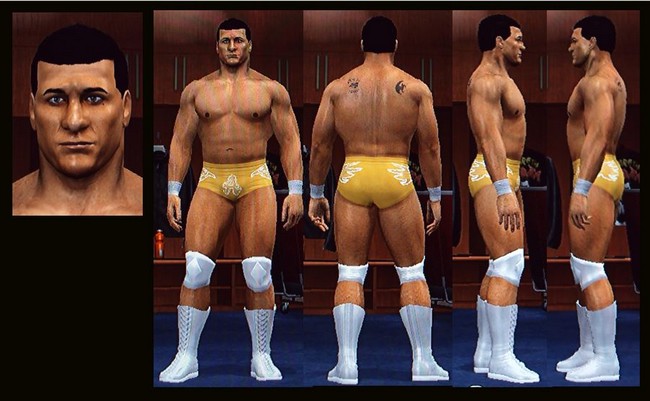 Throughout his entire career Dos Caras, Jr. had always played a heroic character, known in Mexico as a técnico. However, after the contract dealings with WWE surfaced he began showing signs of becoming a villain, known as a rudo. He would turn his attention away from the matches and instead try to win the approval of the fans, often costing his team the match because he was distracted. Caras himself explained this behavior by stating that he "hurt his shoulder, but bravely stayed in the arena". After hinting at a change for weeks Caras finally cemented his villainous persona on April 11, 2009, the first member of the Rodríguez family to be a heel. After becoming a rudo, he began working a storyline with Shocker.
Throughout his entire career Dos Caras, Jr. had always played a heroic character, known in Mexico as a técnico. However, after the contract dealings with WWE surfaced he began showing signs of becoming a villain, known as a rudo. He would turn his attention away from the matches and instead try to win the approval of the fans, often costing his team the match because he was distracted. Caras himself explained this behavior by stating that he "hurt his shoulder, but bravely stayed in the arena". After hinting at a change for weeks Caras finally cemented his villainous persona on April 11, 2009, the first member of the Rodríguez family to be a heel. After becoming a rudo, he began working a storyline with Shocker.
 On June 17, 2009, Rodriguez confirmed that he had signed a three-year contract with WWE, stating that he would not have to go to Florida Championship Wrestling (FCW), WWE's developmental territory, but would go directly to the main roster.Furthermore, he would retain the rights to his name, mask and image but allow the WWE to use it for promotional purposes while he is under contract with them. He agreed to the contract since it addressed the main reasons why he turned down the WWE's offer in January 2009.Despite his claims, he had a match with Kris Logan at FCW wrestling under the name Dos. He later also went on to wrestle under the ring names Dorado and El Dorado.During a segment on the Abraham Washington show at the August 6 taping, Rodriguez revealed a new, unmasked wrestling character named Alberto Banderas. During Raw's WrestleMania Revenge tour of Europe in April 2010, Caras made numerous appearances in untelevised matches for the Raw brand. One night he wrestled as Dos Caras, but he did not wear his mask. He was presented as a villain in a losing effort against Christian. The following month Caras put his mask back on for WWE's tour of Mexico and worked as a hometown hero, prior to returning unmasked during untelevised matches for subsequent Raw and SmackDown shows.
On June 17, 2009, Rodriguez confirmed that he had signed a three-year contract with WWE, stating that he would not have to go to Florida Championship Wrestling (FCW), WWE's developmental territory, but would go directly to the main roster.Furthermore, he would retain the rights to his name, mask and image but allow the WWE to use it for promotional purposes while he is under contract with them. He agreed to the contract since it addressed the main reasons why he turned down the WWE's offer in January 2009.Despite his claims, he had a match with Kris Logan at FCW wrestling under the name Dos. He later also went on to wrestle under the ring names Dorado and El Dorado.During a segment on the Abraham Washington show at the August 6 taping, Rodriguez revealed a new, unmasked wrestling character named Alberto Banderas. During Raw's WrestleMania Revenge tour of Europe in April 2010, Caras made numerous appearances in untelevised matches for the Raw brand. One night he wrestled as Dos Caras, but he did not wear his mask. He was presented as a villain in a losing effort against Christian. The following month Caras put his mask back on for WWE's tour of Mexico and worked as a hometown hero, prior to returning unmasked during untelevised matches for subsequent Raw and SmackDown shows.
 Alberto Rodríguez (born May 25, 1977) is a Mexican professional wrestler, currently signed to WWE, performing on its Raw brand under the ring name Alberto Del Rio. He is a former WWE Champion, the 2011 Royal Rumble winner, outlasting 39 other participants to win the largest Royal Rumble match ever, and 2011 Mr. Money in the Bank (Raw). Before working for WWE, Rodriguez used the name Dos Caras, Jr. as both a mixed martial artist and luchador in mostly Mexico and Japan. He worked in both of Mexico's main wrestling promotions and achieved success in Consejo Mundial de Lucha Libre (CMLL), where he is a former World Heavyweight Champion.
Alberto Rodríguez (born May 25, 1977) is a Mexican professional wrestler, currently signed to WWE, performing on its Raw brand under the ring name Alberto Del Rio. He is a former WWE Champion, the 2011 Royal Rumble winner, outlasting 39 other participants to win the largest Royal Rumble match ever, and 2011 Mr. Money in the Bank (Raw). Before working for WWE, Rodriguez used the name Dos Caras, Jr. as both a mixed martial artist and luchador in mostly Mexico and Japan. He worked in both of Mexico's main wrestling promotions and achieved success in Consejo Mundial de Lucha Libre (CMLL), where he is a former World Heavyweight Champion. Born in San Luis Potosí as the son of luchador Dos Caras Rodríguez graduated from Universidad Autonoma de San Luis Potosí where he earned a degree in architecture.Growing up in a family of wrestlers Rodríguez decided to take up Greco-Roman wrestling, training under Leonel Kolesni and Juan Fernández. He earned a place on the Mexican national team in Greco-Roman wrestling and while competing on the national team obtained several accomplishments.In 1997, he placed third at the World Junior Championships, in the Czech Republic. He also won the Central American and Caribbean Games in his weight division three times and won a medal at the Pan American Games. Rodríguez was on track to compete at the 2000 Summer Olympics in Sydney, Australia, but due to a lack of funding and support, Mexico did not send a wrestling team that year.
Born in San Luis Potosí as the son of luchador Dos Caras Rodríguez graduated from Universidad Autonoma de San Luis Potosí where he earned a degree in architecture.Growing up in a family of wrestlers Rodríguez decided to take up Greco-Roman wrestling, training under Leonel Kolesni and Juan Fernández. He earned a place on the Mexican national team in Greco-Roman wrestling and while competing on the national team obtained several accomplishments.In 1997, he placed third at the World Junior Championships, in the Czech Republic. He also won the Central American and Caribbean Games in his weight division three times and won a medal at the Pan American Games. Rodríguez was on track to compete at the 2000 Summer Olympics in Sydney, Australia, but due to a lack of funding and support, Mexico did not send a wrestling team that year. After not competing at the 2000 Olympic games Rodriguez turned to the family business, and trained with his father to become a professional wrestler. Caras made his debut appearance on May 9, 2000 as he ran in during an Asistencia Asesoría y Administración (AAA) show to save his father from a beat down from El Texano, Pirata Morgan and Espectro, Jr. After making follow up TV show appearances Caras did not make his in ring debut until September 29 of that year when he teamed with Sangre Chicana, El Alebrije and La Parka, Jr. to defeat Los Consagrados (El Texano, Pirata Morgan, Espectro, Jr. and El Cobarde) at AAA's summer event Verano de Escándalo. After his debut Rodriguez would travel to Japan to compete as well, making his Japanese debut on October 11 by teaming with his father to defeat the team of El Azteca and Chiba. Caras continued his AAA storyline with Los Consagrados, teaming with Octagón, La Parka, Jr. and Hong Kong Lee to defeat Los Consagrados by disqualification. Over the next couple of years Caras would work both in Mexico and Japan to gain experience in the ring. In Mexico he worked exclusively for AAA making appearances at shows such as the 2002 Verano de Escándalo, where he teamed with Gronda and El Hijo del Solitario to defeat the trio of Pirata Morgan, Sangre Chicana and El Brazo.
After not competing at the 2000 Olympic games Rodriguez turned to the family business, and trained with his father to become a professional wrestler. Caras made his debut appearance on May 9, 2000 as he ran in during an Asistencia Asesoría y Administración (AAA) show to save his father from a beat down from El Texano, Pirata Morgan and Espectro, Jr. After making follow up TV show appearances Caras did not make his in ring debut until September 29 of that year when he teamed with Sangre Chicana, El Alebrije and La Parka, Jr. to defeat Los Consagrados (El Texano, Pirata Morgan, Espectro, Jr. and El Cobarde) at AAA's summer event Verano de Escándalo. After his debut Rodriguez would travel to Japan to compete as well, making his Japanese debut on October 11 by teaming with his father to defeat the team of El Azteca and Chiba. Caras continued his AAA storyline with Los Consagrados, teaming with Octagón, La Parka, Jr. and Hong Kong Lee to defeat Los Consagrados by disqualification. Over the next couple of years Caras would work both in Mexico and Japan to gain experience in the ring. In Mexico he worked exclusively for AAA making appearances at shows such as the 2002 Verano de Escándalo, where he teamed with Gronda and El Hijo del Solitario to defeat the trio of Pirata Morgan, Sangre Chicana and El Brazo. In 2005, Rodriguez was signed to a contract with Consejo Mundial de Lucha Libre (CMLL). In his first test in the company, Caras competed in the 2005 Copa Jr., but the storyline of the tournament saw him defeated in the semi-final by Dr. Wagner, Jr. Caras's advancement to the semi-final of the cup, mere months after signing with the company was an indicator that the bookers were interested in elevating him up the rankings, this was further supported when he received matches for both the CMLL World Heavyweight Championship and the CMLL World Light Heavyweight Championship inside a three week period.The following year on March 31, 2006 Caras was entered again into the Copa Jr. tournament and earned a return victory over Dr. Wager, Jr. who knocked him out of the tournament the previous year.He also won against Heavy Metal and Apolo Dantes to gain a place in the final, defeating Héctor Garza to win the prize. While working in Japan, Caras had taken to teaming with another second generation wrestler, Lizmark, Jr., and when both found themselves in CMLL they were teamed up once again with the team's famous fathers being the selling point. Over the next year Caras found himself without much direction, he worked storylines with Último Guerrero and Kenzo Suzuki but nothing long term came of it. Caras received two opportunities to challenge Universo 2000 for the CMLL World Heavyweight title but came up short until his third attempt on July 8, 2007 when he became the CMLL World Heavyweight Champion. While in wrestling promotions outside of Mexico the Heavyweight title would indicate that he was the top man in the federation, Mexican wrestling promotions tend to put more emphasis on the lower weight divisions over the heavyweights.
In 2005, Rodriguez was signed to a contract with Consejo Mundial de Lucha Libre (CMLL). In his first test in the company, Caras competed in the 2005 Copa Jr., but the storyline of the tournament saw him defeated in the semi-final by Dr. Wagner, Jr. Caras's advancement to the semi-final of the cup, mere months after signing with the company was an indicator that the bookers were interested in elevating him up the rankings, this was further supported when he received matches for both the CMLL World Heavyweight Championship and the CMLL World Light Heavyweight Championship inside a three week period.The following year on March 31, 2006 Caras was entered again into the Copa Jr. tournament and earned a return victory over Dr. Wager, Jr. who knocked him out of the tournament the previous year.He also won against Heavy Metal and Apolo Dantes to gain a place in the final, defeating Héctor Garza to win the prize. While working in Japan, Caras had taken to teaming with another second generation wrestler, Lizmark, Jr., and when both found themselves in CMLL they were teamed up once again with the team's famous fathers being the selling point. Over the next year Caras found himself without much direction, he worked storylines with Último Guerrero and Kenzo Suzuki but nothing long term came of it. Caras received two opportunities to challenge Universo 2000 for the CMLL World Heavyweight title but came up short until his third attempt on July 8, 2007 when he became the CMLL World Heavyweight Champion. While in wrestling promotions outside of Mexico the Heavyweight title would indicate that he was the top man in the federation, Mexican wrestling promotions tend to put more emphasis on the lower weight divisions over the heavyweights. Throughout his entire career Dos Caras, Jr. had always played a heroic character, known in Mexico as a técnico. However, after the contract dealings with WWE surfaced he began showing signs of becoming a villain, known as a rudo. He would turn his attention away from the matches and instead try to win the approval of the fans, often costing his team the match because he was distracted. Caras himself explained this behavior by stating that he "hurt his shoulder, but bravely stayed in the arena". After hinting at a change for weeks Caras finally cemented his villainous persona on April 11, 2009, the first member of the Rodríguez family to be a heel. After becoming a rudo, he began working a storyline with Shocker.
Throughout his entire career Dos Caras, Jr. had always played a heroic character, known in Mexico as a técnico. However, after the contract dealings with WWE surfaced he began showing signs of becoming a villain, known as a rudo. He would turn his attention away from the matches and instead try to win the approval of the fans, often costing his team the match because he was distracted. Caras himself explained this behavior by stating that he "hurt his shoulder, but bravely stayed in the arena". After hinting at a change for weeks Caras finally cemented his villainous persona on April 11, 2009, the first member of the Rodríguez family to be a heel. After becoming a rudo, he began working a storyline with Shocker. On June 17, 2009, Rodriguez confirmed that he had signed a three-year contract with WWE, stating that he would not have to go to Florida Championship Wrestling (FCW), WWE's developmental territory, but would go directly to the main roster.Furthermore, he would retain the rights to his name, mask and image but allow the WWE to use it for promotional purposes while he is under contract with them. He agreed to the contract since it addressed the main reasons why he turned down the WWE's offer in January 2009.Despite his claims, he had a match with Kris Logan at FCW wrestling under the name Dos. He later also went on to wrestle under the ring names Dorado and El Dorado.During a segment on the Abraham Washington show at the August 6 taping, Rodriguez revealed a new, unmasked wrestling character named Alberto Banderas. During Raw's WrestleMania Revenge tour of Europe in April 2010, Caras made numerous appearances in untelevised matches for the Raw brand. One night he wrestled as Dos Caras, but he did not wear his mask. He was presented as a villain in a losing effort against Christian. The following month Caras put his mask back on for WWE's tour of Mexico and worked as a hometown hero, prior to returning unmasked during untelevised matches for subsequent Raw and SmackDown shows.
On June 17, 2009, Rodriguez confirmed that he had signed a three-year contract with WWE, stating that he would not have to go to Florida Championship Wrestling (FCW), WWE's developmental territory, but would go directly to the main roster.Furthermore, he would retain the rights to his name, mask and image but allow the WWE to use it for promotional purposes while he is under contract with them. He agreed to the contract since it addressed the main reasons why he turned down the WWE's offer in January 2009.Despite his claims, he had a match with Kris Logan at FCW wrestling under the name Dos. He later also went on to wrestle under the ring names Dorado and El Dorado.During a segment on the Abraham Washington show at the August 6 taping, Rodriguez revealed a new, unmasked wrestling character named Alberto Banderas. During Raw's WrestleMania Revenge tour of Europe in April 2010, Caras made numerous appearances in untelevised matches for the Raw brand. One night he wrestled as Dos Caras, but he did not wear his mask. He was presented as a villain in a losing effort against Christian. The following month Caras put his mask back on for WWE's tour of Mexico and worked as a hometown hero, prior to returning unmasked during untelevised matches for subsequent Raw and SmackDown shows.








